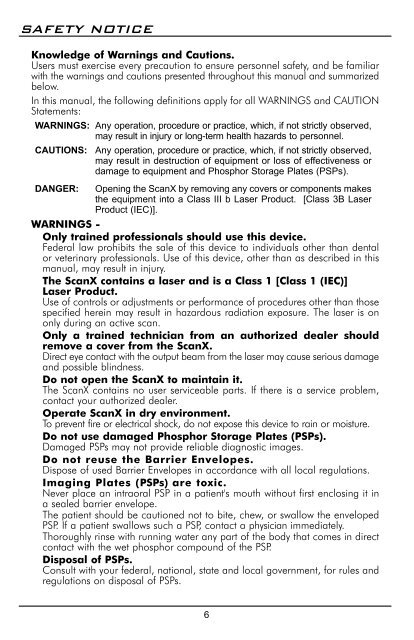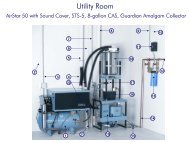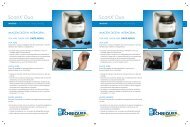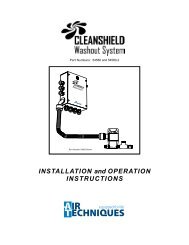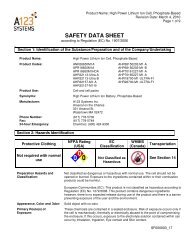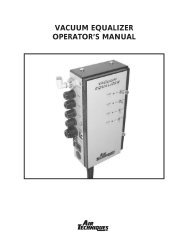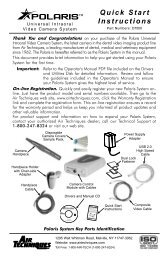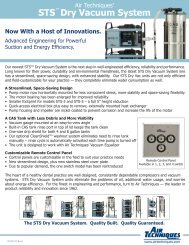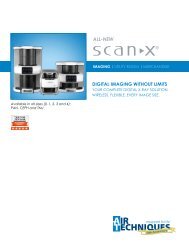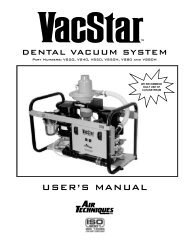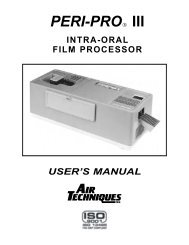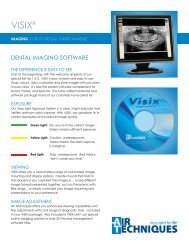ScanX Duo - Air Techniques, Inc.
ScanX Duo - Air Techniques, Inc.
ScanX Duo - Air Techniques, Inc.
Create successful ePaper yourself
Turn your PDF publications into a flip-book with our unique Google optimized e-Paper software.
SAFETY NOTICEKnowledge of Warnings and Cautions.Users must exercise every precaution to ensure personnel safety, and be familiarwith the warnings and cautions presented throughout this manual and summarizedbelow.In this manual, the following definitions apply for all WARNINGS and CAUTIONStatements:WARNINGS: Any operation, procedure or practice, which, if not strictly observed,may result in injury or long-term health hazards to personnel.CAUTIONS: Any operation, procedure or practice, which, if not strictly observed,may result in destruction of equipment or loss of effectiveness ordamage to equipment and Phosphor Storage Plates (PSPs).DANGER: Opening the <strong>ScanX</strong> by removing any covers or components makesthe equipment into a Class III b Laser Product. [Class 3B LaserProduct (IEC)].WARNINGS -Only trained professionals should use this device.Federal law prohibits the sale of this device to individuals other than dentalor veterinary professionals. Use of this device, other than as described in thismanual, may result in injury.The <strong>ScanX</strong> contains a laser and is a Class 1 [Class 1 (IEC)]Laser Product.Use of controls or adjustments or performance of procedures other than thosespecified herein may result in hazardous radiation exposure. The laser is ononly during an active scan.Only a trained technician from an authorized dealer shouldremove a cover from the <strong>ScanX</strong>.Direct eye contact with the output beam from the laser may cause serious damageand possible blindness.Do not open the <strong>ScanX</strong> to maintain it.The <strong>ScanX</strong> contains no user serviceable parts. If there is a service problem,contact your authorized dealer.Operate <strong>ScanX</strong> in dry environment.To prevent fire or electrical shock, do not expose this device to rain or moisture.Do not use damaged Phosphor Storage Plates (PSPs).Damaged PSPs may not provide reliable diagnostic images.Do not reuse the Barrier Envelopes.Dispose of used Barrier Envelopes in accordance with all local regulations.Imaging Plates (PSPs) are toxic.Never place an intraoral PSP in a patient's mouth without first enclosing it ina sealed barrier envelope.The patient should be cautioned not to bite, chew, or swallow the envelopedPSP. If a patient swallows such a PSP, contact a physician immediately.Thoroughly rinse with running water any part of the body that comes in directcontact with the wet phosphor compound of the PSP.Disposal of PSPs.Consult with your federal, national, state and local government, for rules andregulations on disposal of PSPs.6


